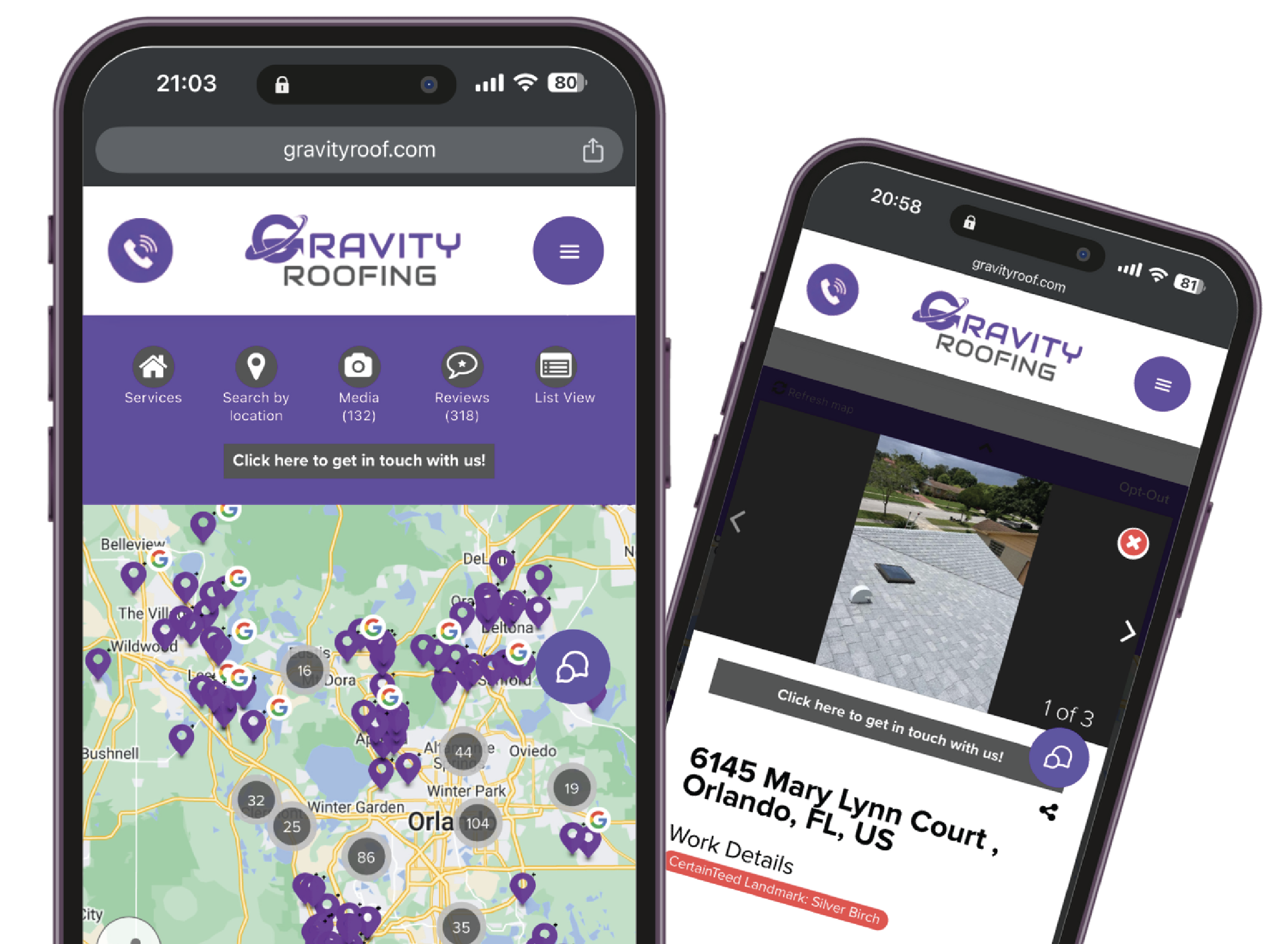Storms hit fast in Central Florida, and when they do, your roof takes the brunt of it. From Orlando to Winter Park and beyond, knowing what to do right after the storm can make all the difference. At Gravity Roofing, we’ve helped hundreds of homeowners navigate storm damage with confidence. This guide breaks down what to do step by step so you can stay calm, act fast, and protect what matters most.
1. Ensure Safety First
Before anything else, make sure everyone’s safe. Watch out for downed power lines, exposed wires, or signs of structural damage. If anything looks risky, evacuate and call emergency services.
Never climb onto the roof. Even if it looks okay, hidden damage can make it unsafe. If water is leaking or your ceiling looks unstable, avoid the area and wait for professionals.
2. Check for Interior & Exterior Roof Damage
Start with an indoor inspection. Look for ceiling stains, attic leaks, or soggy insulation—Florida humidity can turn a damp patch into mold quickly.
Then walk around outside (safely). From the ground, check for:
- Missing shingles
- Loose flashing
- Broken gutters
- Debris buildup
Use binoculars if needed, but leave close-up inspections to a professional roof inspection with Gravity Roofing.
3. Document the Roof Damage Thoroughly
Take clear photos and videos of every issue—inside and out. Capture wide shots for context and close-ups for details.
Write down notes including time, date, and locations of damage. These records are vital for a strong insurance claim.
4. Prevent Further Roof Damage Immediately
If it’s safe, place buckets under leaks and move valuables out of the way. Lay down towels and protect floors.
Use plastic sheets or tarps to cover visible holes—but only if you can do it without risking injury. Gravity Roofing offers emergency tarp services to help prevent further water intrusion and structural issues.
5. Choose a Licensed, Local Roofing Contractor
Avoid storm chasers. Some contractors show up from out of state and vanish once the check clears.
Instead, go with a trusted local company like Gravity Roofing:
- We’re fully licensed and insured in Florida
- Backed by hundreds of 5-star reviews
- Experts in Florida building codes and storm patterns
We offer detailed roof inspections and help guide you from damage to full repair. For added peace of mind, you can also review certified roofing professionals through the NRCA.
6. Start Your Insurance Claim Process
Call your insurer right away. Provide all documentation and ask for next steps.
If possible, have a Gravity Roofing inspector present during the adjuster’s visit. We advocate for you and make sure nothing is missed—maximizing your chances for a fair claim.
7. Schedule Repairs Based on Inspection Report
Once the claim is approved, compare the adjuster’s scope of work with our recommendations. We’ll walk you through every step of the repair process and provide a clear timeline.
Proper roof repairs aren’t just about patching damage—they’re about restoring your home’s long-term safety. That’s why Gravity Roofing uses only top-quality materials and experienced crews.
8. Plan for Roof Maintenance and Follow-Up Inspections
After repairs, don’t wait for the next storm to test your roof. Let Gravity Roofing help you stay prepared:
- Schedule regular roof inspections
- Keep your gutters clean
- Trim overhanging branches
- Check your attic after every major storm
Preventive maintenance helps avoid repeat damage and gives you peace of mind in Florida’s stormy seasons. For more storm safety and recovery tips, check your local guidelines.
Final Thoughts
Storm damage is stressful, but with a clear plan and the right roofer, you can act quickly and confidently. Gravity Roofing is here to help homeowners across Central Florida—from Kissimmee to Sanford—protect their homes, navigate insurance claims, and restore what matters.














